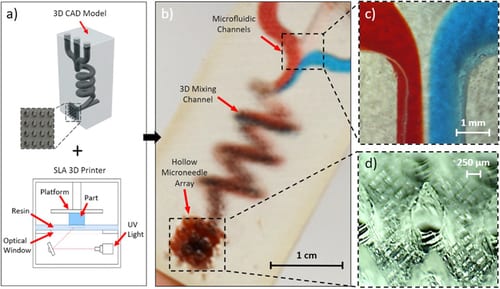In the recently published ‘ A 3D printed microfluidic-enabled hollow microneedle architecture for transdermal drug delivery,’ researchers explore innovative methods for delivering medication into the bloodstream via the skin. In this study, they work on the micro-level to create ‘new degrees of freedom’ in delivery.
.
As medicine continues in the direction of patient-specific treatments, 3D printing continues to play an enormous role—including medical devices, implants, innovations in tissue engineering like scaffolding, and much more.
.
In this study, the researchers continue to refine the use of needles for transdermal use. Conventionally, they have been fabricated with materials like plastics, metals, ceramics, and more. With the advent of biocompatible polymers, microneedles are being more widely used due to greater disposability, affordability, and the potential for customization—pointing toward patient-specific benefits overall. Microfluidic devices are behind many of the new capabilities in drug delivery systems, allowing for mixing and […]
Case Study: How PepsiCo achieved 96% cost savings on tooling with 3D Printing Technology
Above: PepsiCo food, snack, and beverage product line-up/Source: PepsiCo PepsiCo turned to tooling with 3D printing...





0 Comments